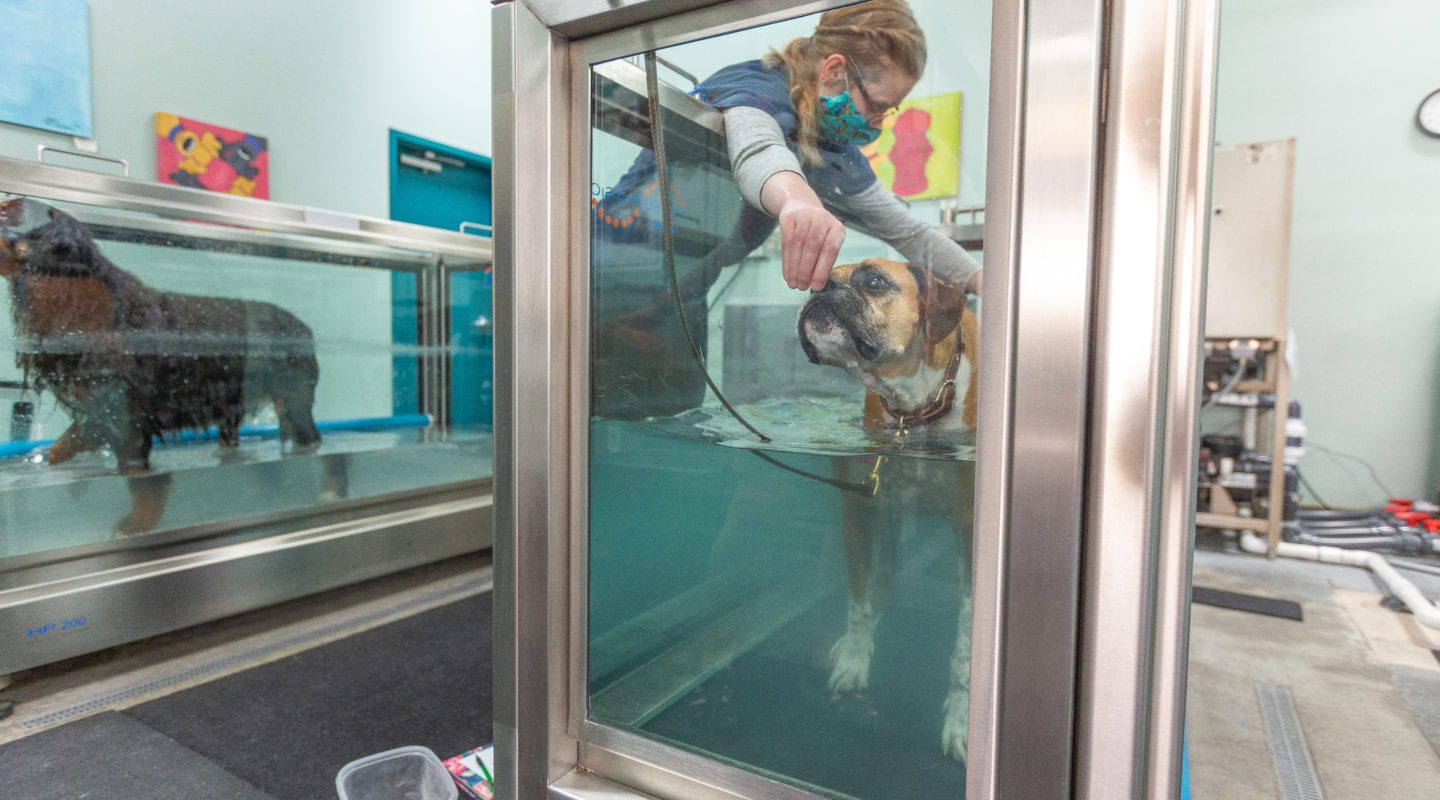CRCG’s Collaborative Care Team of expert-certified rehabilitation therapists includes licensed veterinarians, physical therapists, and licensed veterinary technicians/nurses.
Our rehabilitation experts are leading the industry of restoring quality of life to geriatric, injured, overweight, post-operative, and neurologic or otherwise compromised dogs through physical therapy and integrative veterinary approaches. Our Collaborative Care Team works hand in hand to provide the best and most comprehensive rehabilitation care for your family member.
We can also assist with other conditions, as well as offering wheelchairs/wheelchair fittings, orthotics and prosthetics, nutritional counseling, and supplements.
Our process begins with an initial evaluation. The initial evaluation is a 75-minute appointment with a veterinarian or physical therapist and consists of an orthopedic, neurologic, and myofascial exam. We look at the whole dog, not just the primary concern. Often when injury is involved, your dog’s body compensates in other ways and may cause muscle or joint pain that is not as obvious to your regular veterinarian. When developing a plan, we look at the whole picture. The plan will include in-clinic recommendations and home exercises. Your dog will also receive the first treatment during this evaluation. The evaluation will determine the plan that best serves your companion’s condition. Package pricing and monthly rates are available based on the plan.
More information: What is veterinary rehabilitation?
Our rehabilitation tools include but are not limited to:
Hydrotherapy, which includes underwater treadmills and variable current pools. Hydrotherapy decreases weight bearing through the joints, which reduces pain. In the water, gentle range of motion of all four limbs is accomplished and strengthening is provided by the water resistance. Neurological re-education for muscles occurs because they are used differently. There seems to be psychological benefits for the dogs that occurs because they can exercise without pain.
Low Level Laser Therapy (LLLT) – Laser light improves wound healing, increases blood flow, reduces swelling, and stimulates natural, long lasting pain relief.
Radial Pulse Wave Therapy (RPWT) – Radial Pulse Wave Therapy is similar to the technology used in lithiotripsy to break up kidney stones. The cell membranes get hyperpolarized and oxygen free radicals are produced. This effect causes, in its simplest terms:
- Improved blood flow
- Increased healing
- Decreased pain
- Recruitment of mesenchymal stem cells (cells that promote healing in the body)
- Decreased inflammation
Ultrasound – Therapeutic ultrasound uses sound waves to create a deep heat that penetrates 1-1.5 inches into soft tissue. It helps to loosen up scar tissue, increase circulation and decrease pain.
Pulsed Electromagnetic Field (PEMF) therapy –PEMF therapy is a non-invasive method to treat a variety of pathologies by delivering electric and magnetic fields to tissues via inductive coils. Pathologies that are often treated with PEMF devices include bone fractures, inflammation and arthritis, pain, edema, and chronic wounds.
Electrical stimulation or E-stim – Electrodes are applied over muscles to facilitate muscle contraction either to retrain the muscles after a neurological injury or promote strengthening of healthy muscle.
Massage Therapy – Massage is the therapeutic application of hands-on deep tissue techniques to the voluntary muscle system for the purpose of increasing circulation, reducing muscle spasms, relieving tension, enhancing muscle tone, promoting healing and increasing range of motion in all breeds of dogs.
Physiotaping – Physical therapists sometimes use kinesiology taping for humans as one part of an overall treatment plan for injuries. Kinesiology tape has found its way into the canine world where it facilitates the natural healing process while providing support and stability to muscles and joints without restricting movement.
Acupuncture activates the central nervous system, acupuncture releases the body’s natural painkillers (such as endorphins), hormones (such as cortisol) and neurotransmitters (such as serotonin), thereby affecting all systems of the body.
Chiropractic therapy focuses on the vertebral column and uses the body’s own healing abilities and the relationship between the spine and the nervous system to restore and maintain good health.

